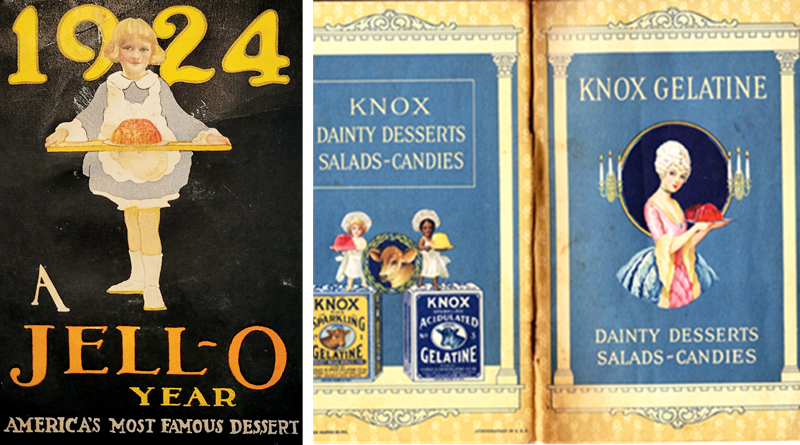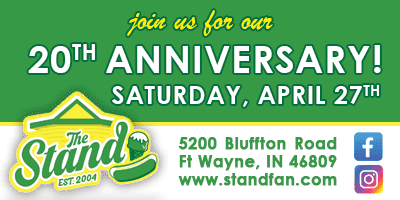The Story Of Gelatin & Jell-O ~ The History of Ordinary Things

For the castle lifestyle, gelatin was used to create jelled dishes, typically of savory flavors for glazing meat. Gelatin is a translucent, colorless, odorless, brittle, nearly tasteless solid substance. It is derived from the collagen primarily from pork skins, cattle and pork bones, or split cattle hides. Contrary to popular myth, horns and hooves are not used and no horses are involved. Extracting, boiling, straining, and clarifying collagen to make gelatin was a long and tedious process done by servants as far back as the middle ages. The product was dried into rounds or sheets that needed a long soaking before it could be used.
In 1890, Charles Knox developed the world’s first pre-granulated unflavored gelatin. His wife, Rose Knox, developed hundreds of recipes which were printed on KNOX packages, on leaflets, and in illustrated cookbooks. In the late 1920s, their son, James E. Knox, produced pharmaceutical gelatine, gel caps, to encapsulate vitamins and medication. James also developed plasma extender, an intravenous solution which was used as a blood plasma substitute during World War II. The Knox empire was acquired by Thomas J. Lipton Inc. in 1972.
In 1885, an unused patent for powdered gelatin was purchased by Pearle Wait, a LeRoy, New York carpenter and cough syrup manufacturer. His wife, May, added strawberry, raspberry, orange and lemon flavorings and named the powder, JELL-O. Unable to successfully market their product, in 1899, Wait sold the business to his neighbor, Orator Francis Woodward, for $450.
In 1902, Woodward placed advertisements in the Ladies’ Home Journal proclaiming Jell-O to be America’s Most Famous Dessert. By 1904, his company, Genesee Pure Food Co. was sending salesmen across the country to distribute free Jell-O cookbooks directly to housewives, a pioneering marketing tactic at the time.
In 1927 Jell-O was bought by General Foods Corporation. In 1934, comedian Jack Benny became JELL-O’s spokesperson, and they introduced a jingle “J-E-L-L-O”. In 1964, the jingle changed to “There’s always room for Jell-O” in 1964. General Foods was merged into Kraft Foods in 1989.
Today gelatin is used as a gelling agent in foods such as trifles, aspic, marshmallows, and confectioneries such as Peeps, gummy bears, and jelly babies. It can be found in jams, yogurt, cream cheese, and margarine. It is also used in pharmaceuticals, photography, and cosmetic manufacturing.
For decades, gelatin was touted as a good source of protein, said to strengthen nails and hair. There is little scientific evidence to support this claim.
Jell-O has tried, and retired, many flavors including celery, Italian salad, and spicy tomato for use with vegetables and meats (1964). Chocolate (1906), coffee (1918), cola (1942) and bubble gum have come and gone. Today, strawberry is the most popular flavor followed by orange and berry blue.
JELL-O pudding pops were introduced in 1982. Jell-O Jigglers, 1990, transformed Jell-O from a funeral dinner salad into a kid’s snack food. Today, Kraft’s Jell-O gelatin claims to be the world’s most popular prepared dessert, selling over 300M boxes/year. Let’s have Jell-O!
- Keeping Things Level Over Time ~ The History of Ordinary Things - March 15, 2024
- A Brief On Lingerie ~ The History of Ordinary Things - February 16, 2024
- Hand Shaping Ice Until The Zamboni ~ The History of Ordinary Things - January 19, 2024


